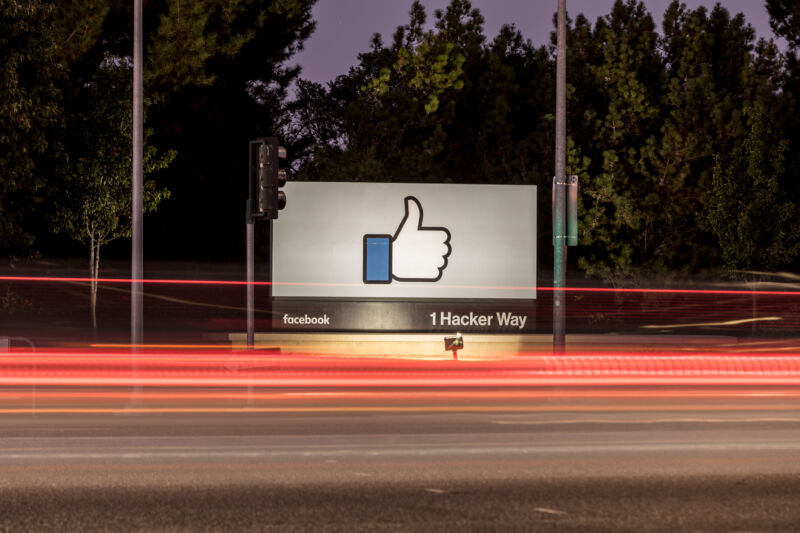US funds $5B chip effort after lagging on semiconductor innovation
Now hiring? —
US had failed to fund the “science half” of CHIPS and Science Act, critic said.

Enlarge / US President Joe Biden speaks before signing the CHIPS and Science Act of 2022.
The Biden administration announced investments Friday totaling more than $5 billion in semiconductor research and development intended to re-establish the US as a global leader manufacturing the “next generation of semiconductor technologies.”
Through sizeable investments, the US will “advance US leadership in semiconductor R&D, cut down on the time and cost of commercializing new technologies, bolster US national security, and connect and support workers in securing good semiconductor jobs,” a White House press release said.
Currently, the US produces “less than 10 percent” of the global chips supply and “none of the most advanced chips,” the White House said. But investing in programs like the National Semiconductor Technology Center (NSTC)—considered the “centerpiece” of the CHIPS and Science Act’s four R&D programs—and training a talented workforce could significantly increase US production of semiconductors that the Biden administration described as the “backbone of the modern economy.”
The White House projected that the NSTC’s workforce activities would launch in the summer of 2024. The Center’s prime directive will be developing new semiconductor technologies by “supporting design, prototyping, and piloting and through ensuring innovators have access to critical capabilities.”
Moving forward, the NSTC will operate as a public-private consortium, involving both government and private sector institutions, the White House confirmed. It will be run by a recently established nonprofit called the National Center for the Advancement of Semiconductor Technology (Natcast), which will coordinate with the secretaries of Commerce, Defense, and Energy, as well as the National Science Foundation’s director. Any additional stakeholders can provide input on the NSTC’s goals by joining the NSTC Community of Interest at no cost.
The National Institute of Standards and Technology (NIST) has explained why achieving the NSTC’s mission to develop cutting-edge semiconductor technology in the US will not be easy:
The smallest dimensions of leading-edge semiconductor devices have reached the atomic scale and the complexity of the circuit architecture is increasing exponentially with the use of three-dimensional structures, the incorporation of new materials, and improvements in the thousands of process steps needed to make advanced chips. Into the future, as new applications demand higher-performance semiconductors, their design and production will become even more complex. This complexity makes it increasingly difficult and costly to implement innovations because of the dependencies between design and manufacturing, between manufacturing steps, and between front-end and back-end processes.
The complexity of keeping up with semiconductor tech is why it’s critical for the US to create clear pathways for skilled workers to break into this burgeoning industry. The Biden administration said it plans to invest “at least hundreds of millions of dollars in the NSTC’s workforce efforts,” creating a Workforce Center of Excellence with locations throughout the US and piloting new training programs, including initiatives engaging underserved communities. The Workforce Center will start by surveying best practices in semiconductor education programs, then establish a baseline program to attract workers seeking dependable paths to break into the industry.
Last year, the Semiconductor Industry Association (SIA) released a study showing that the US was not adequately preparing a highly skilled workforce. Between “67,000, or 58 percent, of projected new jobs, may remain unfulfilled at the current trajectory,” SIA estimated.
A skilled workforce is just part of the equation, though. The US also needs facilities where workers can experiment with new technologies without breaking the bank. To that end, the Department of Commerce announced it would be investing “at least $200 million” in a first-of-its-kind CHIPS Manufacturing USA Institute. That institute will “allow innovators to replicate and experiment with physical manufacturing processes at low cost.”
Other Commerce Department investments announced include “up to $300 million” for advanced packaging R&D necessary for discovering new applications for semiconductor technologies and over $100 million in funding for dozens of projects to help inventors “more easily scale innovations into commercial products.”
A Commerce Department spokesperson told Ars that “the location of the NSTC headquarters has not yet been determined” but will “directly support the NSTC research strategy and give engineers, academics, researchers, engineers at startups, small and large companies, and workforce developers the capabilities they need to innovate.” In 2024, NSTC’s efforts to kick off research appear modest, with the center expecting to prioritize engaging community members and stakeholders, launching workforce programs, and identifying early start research programs.
So far, Biden’s efforts to ramp up semiconductor manufacturing in the US have not gone smoothly. Earlier this year, TSMC predicted further delays at chips plants under construction in Arizona and confirmed that the second plant would not be able to manufacture the most advanced chips, as previously expected.
That news followed criticism from private entities last year. In November, Nvidia CEO Jensen Huang predicted that the US was “somewhere between a decade and two decades away” from semiconductor supply chain independence. The US Chamber of Commerce said last August that the reason why the US remained so far behind was because the US had so far failed to prioritize funding in the “science half” of the CHIPS and Science Act.
In 2024, the Biden administration appears to be attempting to finally start funding a promised $11 billion total in research and development efforts. Once NSTC kicks off research, the pressure will be on to chase the Center’s highest ambition of turning the US into a consistent birthplace of life-changing semiconductor technologies once again.
US funds $5B chip effort after lagging on semiconductor innovation Read More »

